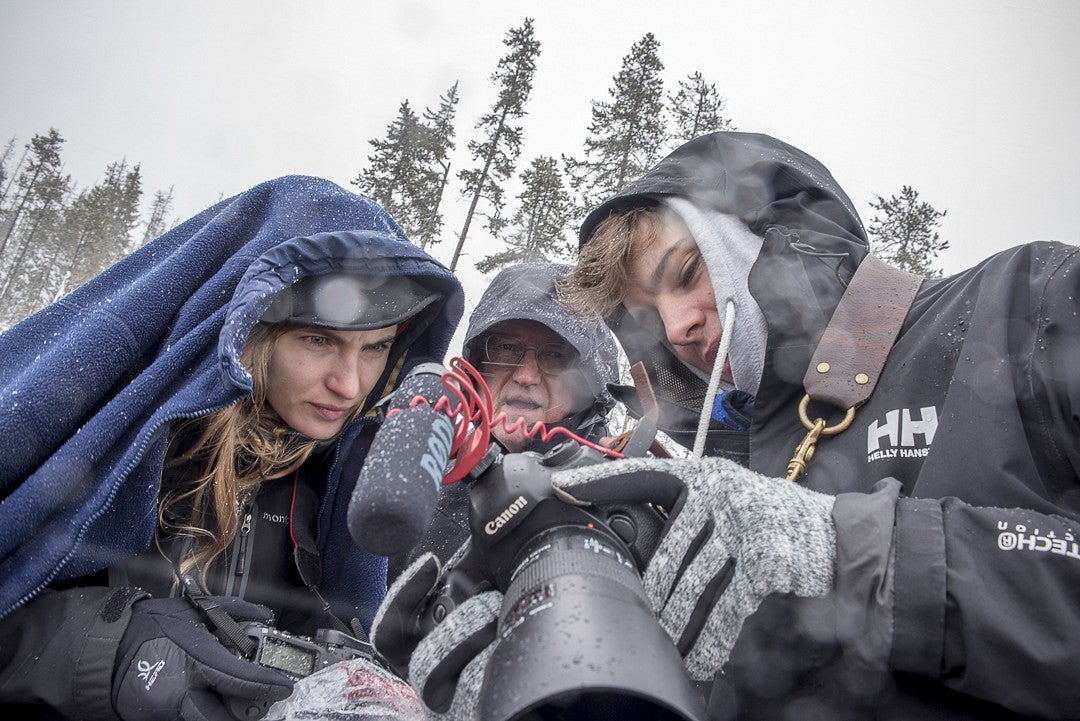
The Inside Out Classroom
Journalism Professors Torsten Kjellstrand and Mark Blaine, with former National Geographic Executive Editor for the Environment Dennis Dimick, developed a series of classes examining the Anthropocene in the Willamette River watershed. The class took students out into the field to learn, observe, and create stories about the area's rivers.
TORSTEN KJELLSTRAND | Professor of Practice
This class could have been a nightmare. Doctoral students from Prevention Science and Landscape Architecture. Professional Masters students nervous about their futures. Undergrads from Advertising, Journalism and International Studies. Many had never met before the first day of class, way back in September, 2018.
But it was a dream (mostly). Students joined their respective skills, talents, expertise and energies to dive in to stories that we hope will help you understand something about how we, humans, have shaped this part of Kalapuya land.
One of the secrets to any success came from the guidance we got from Dennis Dimick, recently retired as Executive Editor for the Environment at National Geographic, and a co-founder of Eyes on Earth. He’s the best kind of editor: candid, kind and smart, with an eye for elegance and a nose for strongfact-based storytelling.
For me, it was a chance to teach a class more ambitious than a normal ten-week class. The process was simple: find a topic, do deep research, find a story, do field work, edit and publish. Implementing that process was complicated, as it always is. The students stuck with it, struggling as stories came apart, as equipment failed, as plans changed due to bad weather and as their ambitions and understanding grew.
What I hope for most is that the students are proud of the work on this website and that the work they did to tell these stories pushed them to learn something that will pump up the work they do in the future, because we’ll need them as we continue to figure out how to live on this planet at this time.
DENNIS DIMICK | (Ret.) Executive Environment Editor, National Geographic
Being a part of this class has been like coming home. I was able to return to Oregon, the state where I grew up, went to college, and where I was a journalist for the early years of my career. I’m grateful to Torsten Kjellstrand and Mark Blaine for the invitation.
The “Roots and Rivers” idea of the class is dear to me, as my roots run deep in the Willamette Valley. My ancestors traveled by wagon train on the Oregon Trail to what is now Marion County in 1847, and my childhood was spent on a small Clackamas County sheep and hay farm near the Tualatin River, a tributary of the Willamette.
After nearly 40 years as a journalist at newspapers in Oregon, Washington, and Kentucky, and as an editor at National Geographic Magazine in Washington D.C., it has been a joy to collaborate with these bright, committed, and curious students. We’ve shared ideas, viewpoints, and strategies, and I have learned from them as they discovered their way to intriguing stories about life in the southern Willamette Valley in the early 21st century.
This class has been an experiment, I hope a worthy one, for our goal was to show that deeper, more meaningful stories can emerge if explorations occur over the course of a school year. The stories show how people and place are connected, how landscapes influence what we become, and what becomes of the landscapes we inhabit.
